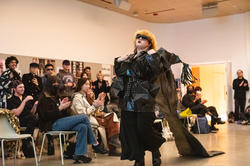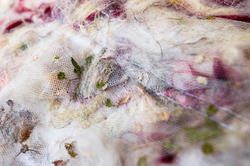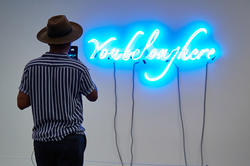The Category Is…, a six-week Apparel Design course, culminated in students creating wearable architectural garments for a runway-style finale.
Indigenous Apparel Designers Urge RISD Students to Reject Fast Fashion
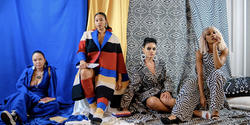
“We’re learning a lot about who these students are as people and how they see themselves fitting into their community and carving out space for themselves in the design world,” say Indigenous apparel designer Korina Emmerich (Puyallup) and educator Liana Shewey (Muscogee Creek). The two founders of Relative Arts—an incubator for Indigenous futurism in NYC—toured RISD’s Canal Street Studios earlier this semester and admired work in progress by Apparel Design students.
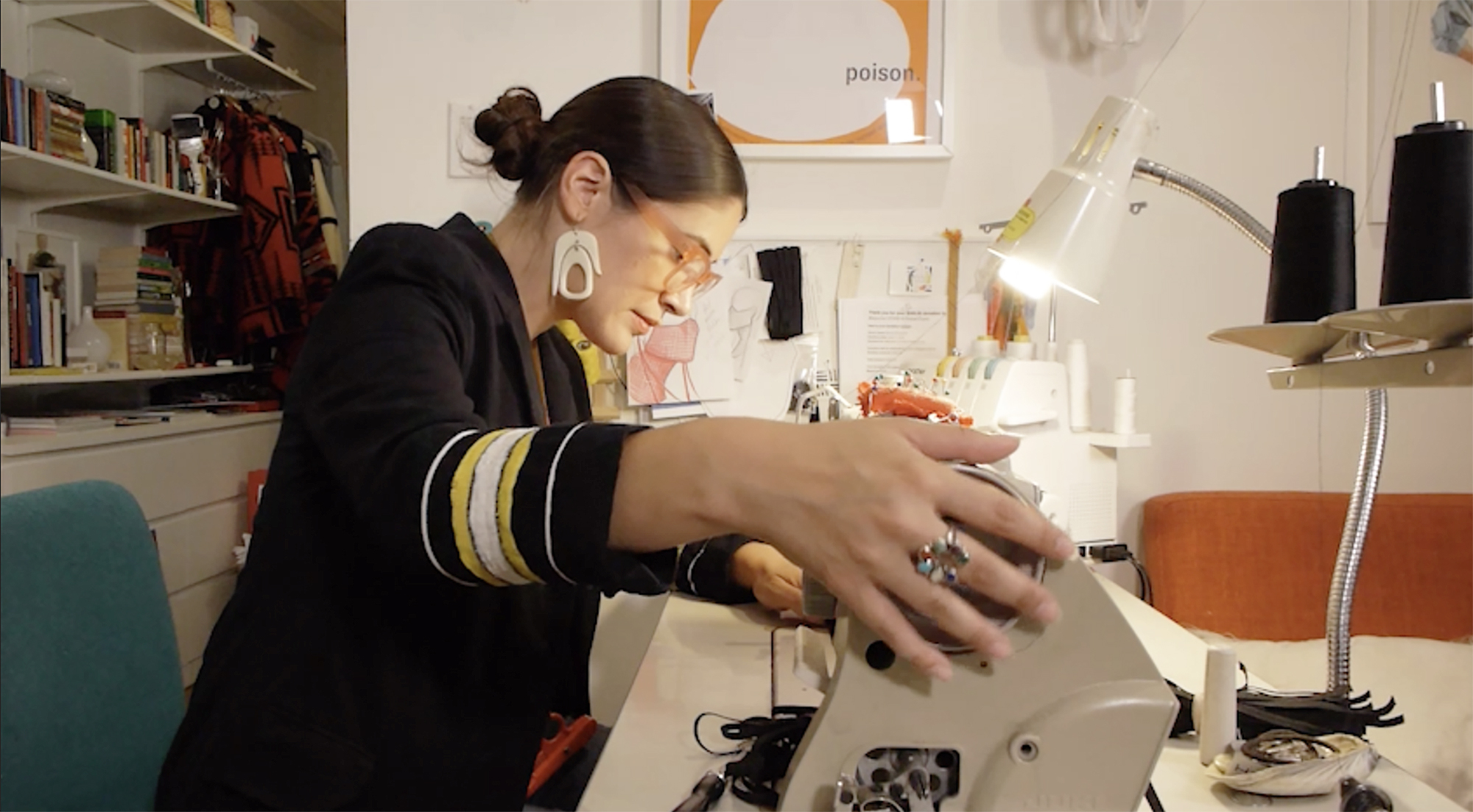
Their extended visit to campus—cosponsored by RISD’s Center for Social Equity and Inclusion and Architecture & Design division—was part of the Indigenous and First Nations Artist Series developed in partnership with Painting Professor Duane Slick (Meskwaki). RISD Museum Henry Luce Curatorial Fellow for Native American Art Sháńdíín Brown (Navajo) helped organize the event and recently oversaw the acquisition of multiple pieces by Emmerich in her ongoing quest to build the museum’s collection of contemporary Indigenous art and design.
“Pendleton... is non-Native, so Korina’s use of their patterns is essentially an appropriation of an appropriation.”
“I’m a big fan of Korina’s,” Brown says. “I admired her work at the Indigenous Fashion Arts Festival in Toronto last June but first learned about her before that—at the onset of the pandemic—when she made these fantastic masks featuring Pendleton fabrics with Navajo textile designs. Their textiles are made sustainably in one of the only wool mills in America, but the company is non-Native, so Korina’s use of their patterns is essentially an appropriation of an appropriation.”
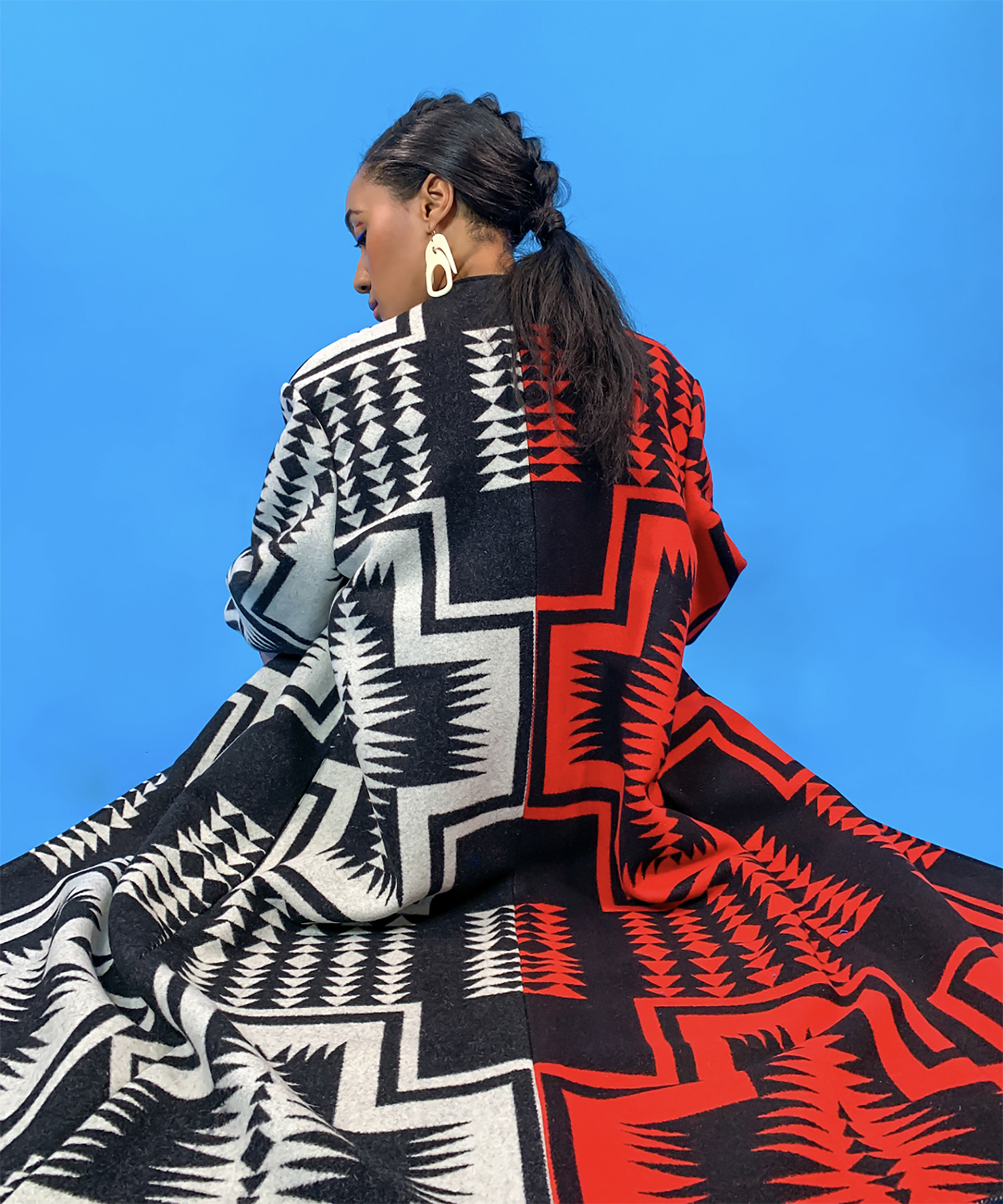
In addition to working directly with students, Emmerich and Shewey spoke about their work in a lecture at RISD’s Canal Street Studios and encouraged listeners to “stop buying Native American-inspired clothing and, instead, buy clothing designed by inspired Native Americans.” As Apparel Design Department Head Lisa Z. Morgan explains, their message supports the department’s evolving curriculum.
“We are working to challenge the relentless cycle of fashion by slowing down, rethinking and reinventing.”
“We are working to challenge the relentless cycle of fashion by slowing down, rethinking and reinventing,” says Morgan. “Korina and Liana shared with students and faculty their ideas about how Indigenous and other non-Western knowledge systems can be reflected in the curriculum and how they can contribute to ethical and responsible design practices. Learning about how the fashion industry has thrived despite a culture that exploits BIPOC legacies allows us to more knowledgeably confront the systems that prevent all bodies from having agency while navigating the evolving fields of fashion, art and design.”
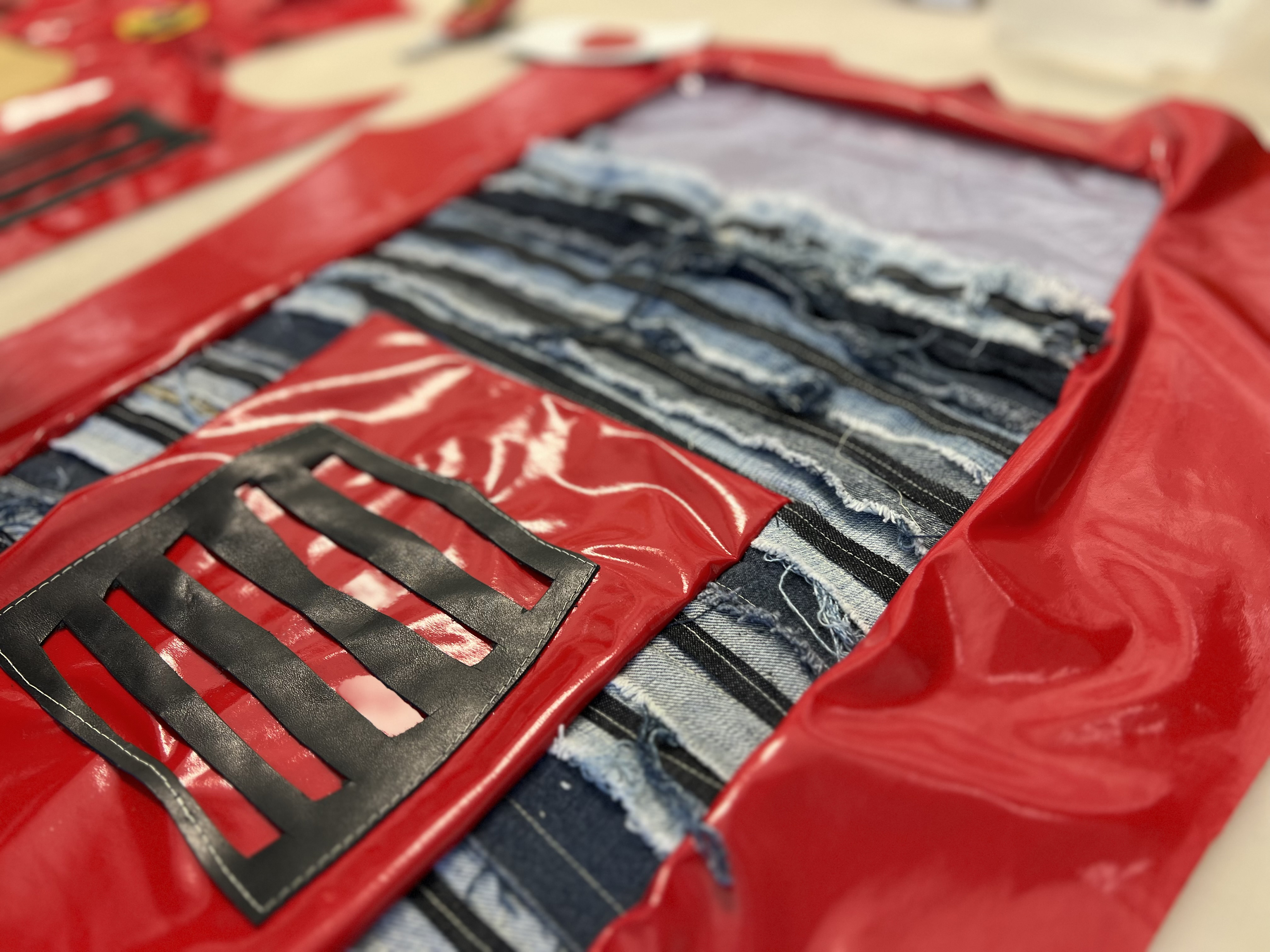
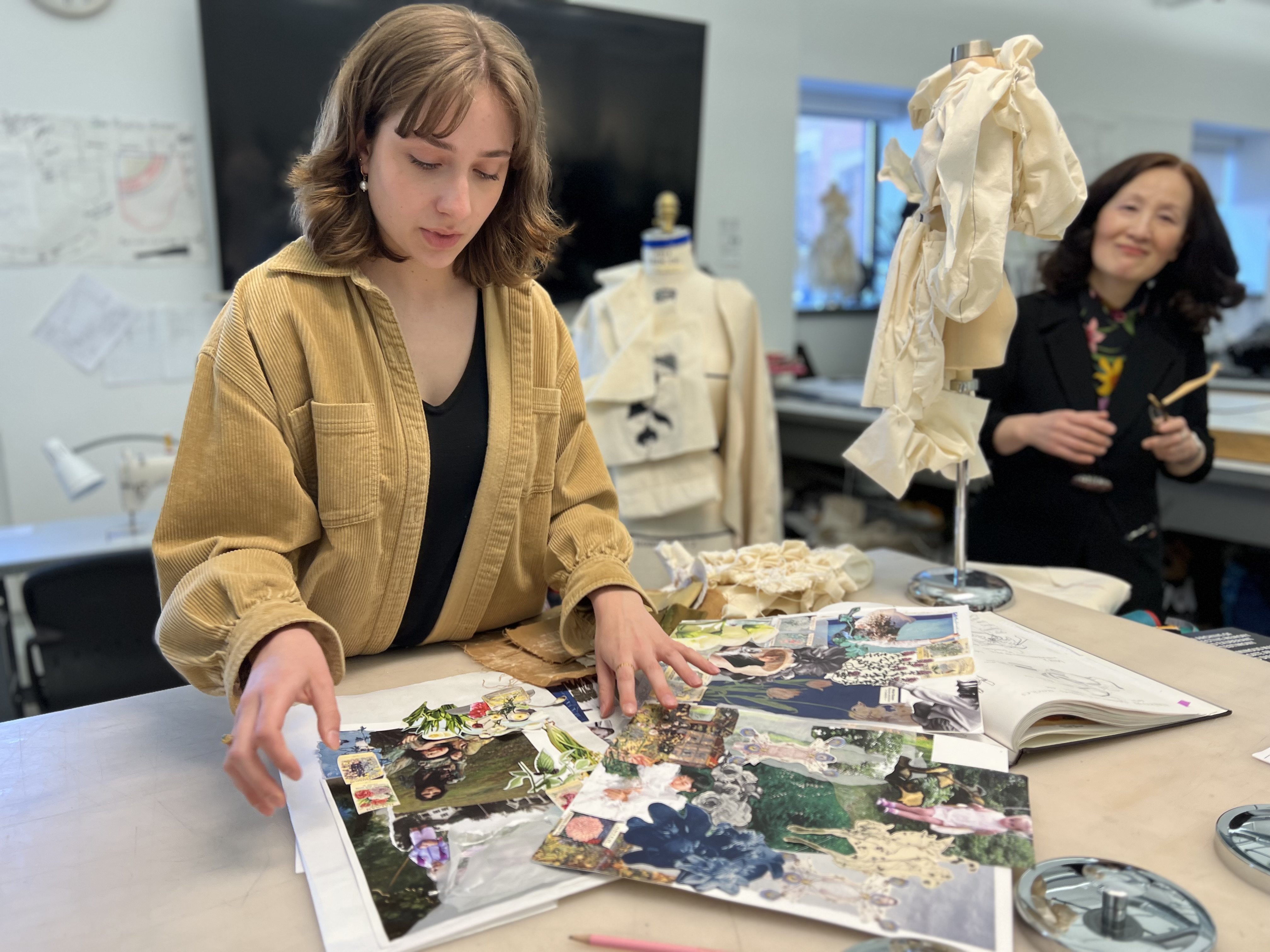
Emmerich and Shewey also joined students in an unofficial workshop dedicated to creating a stitched banner in support of then-striking RISD workers on campus. Morgan describes the experience as “the perfect opportunity to work in community and help students address real-world labor issues.”
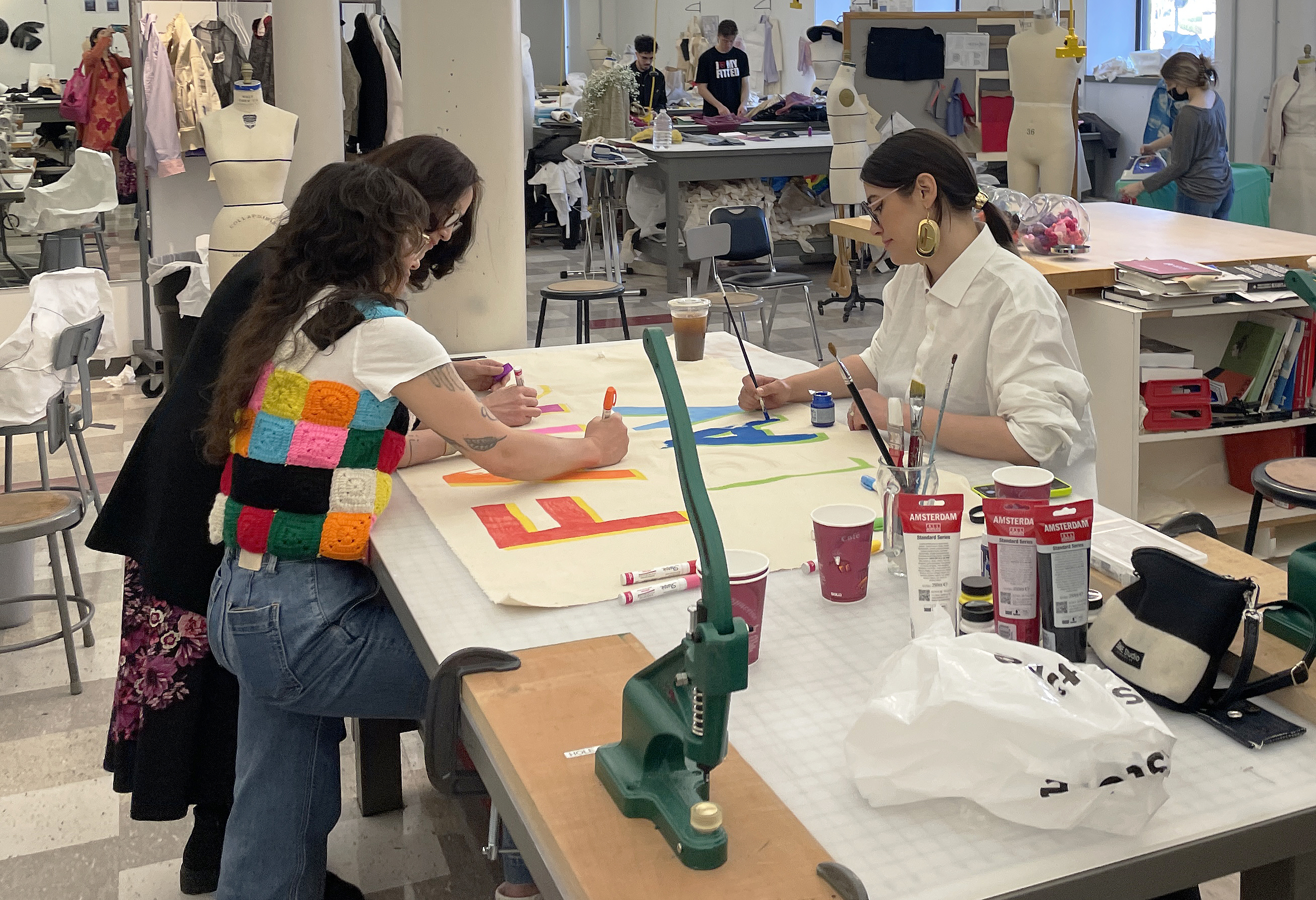
Sophomore Everett Moore 25 AP was inspired by Emmerich and Shewey’s visit and is considering his own personal identity as he puts together a collection of pieces featuring reclaimed denim and “a really fun vinyl fabric” he found at Mood in NYC. Assistant Professor Jeung-Hwa Park MFA 00 TX is working with Moore and his classmates to explore and reinterpret non-Western techniques and styles—including Baji, traditional Korean menswear, which she describes as “comfortable and nonbinary.”
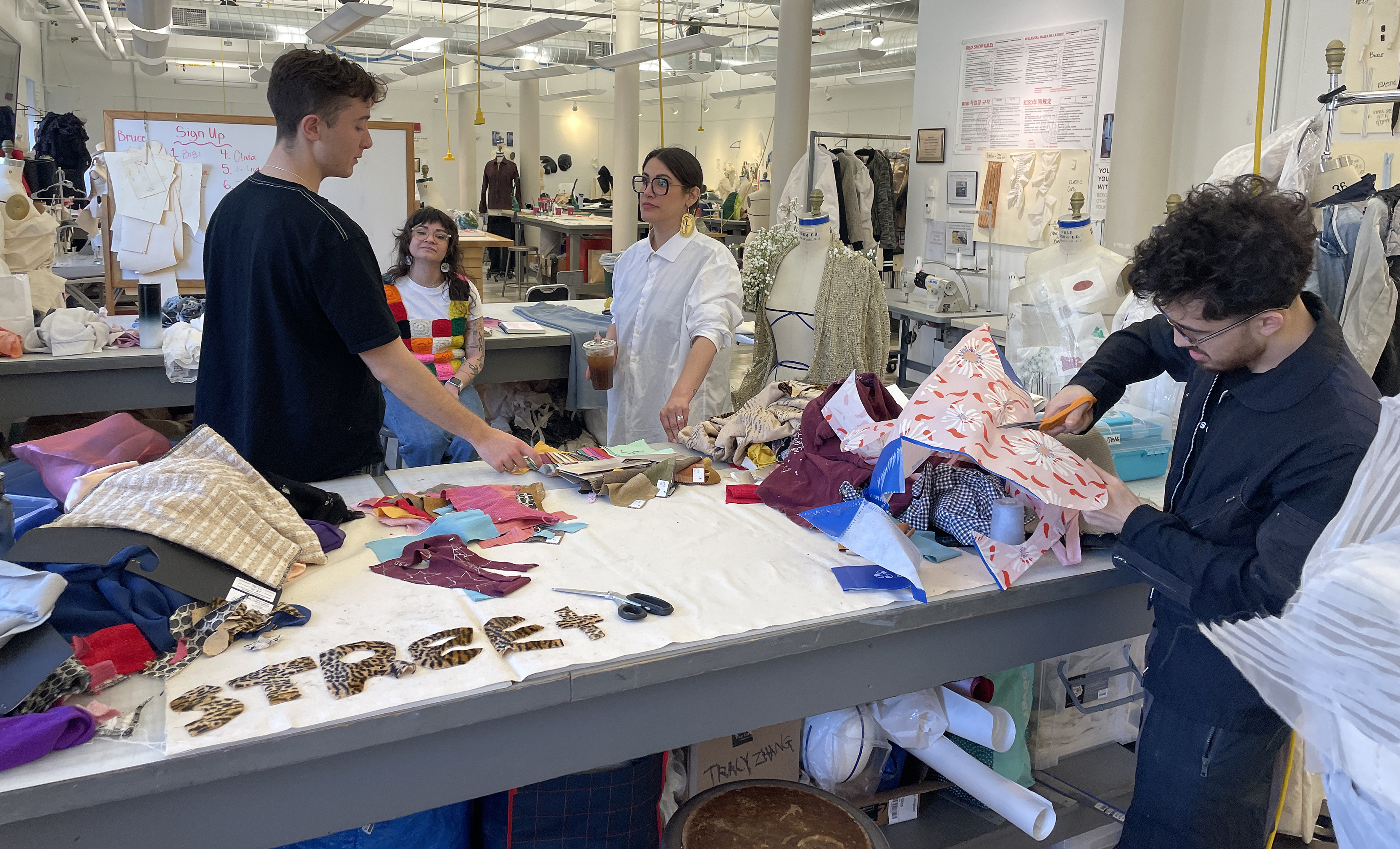
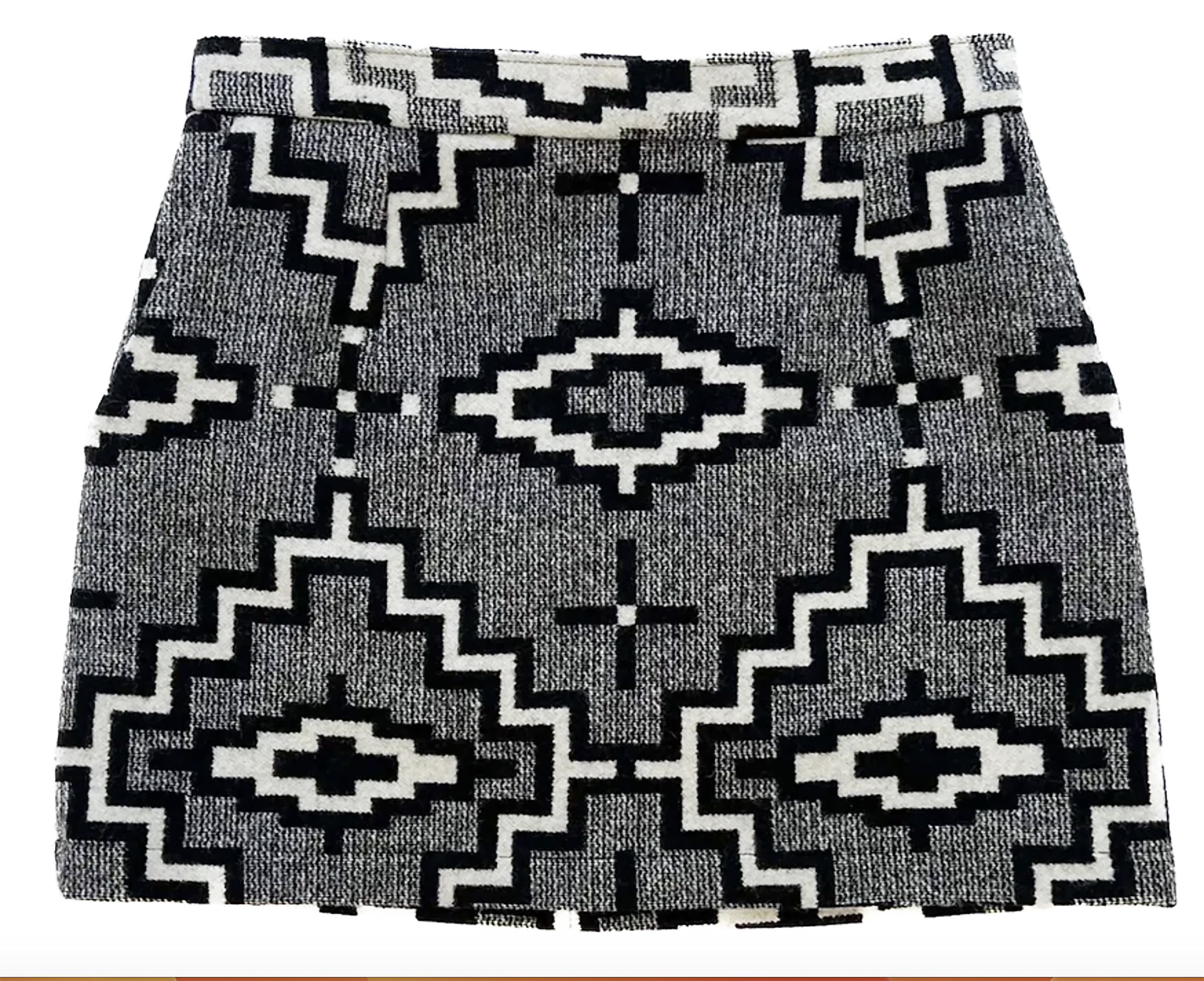
Apparel Design sophomores are encouraged to explore their individual identities along with socially constructed categories of identity. “It’s not all about their race and ethnicity,” Brown notes. “One student strongly identifies as a surfer and is designing apparel that fits in with the surf aesthetic.” Vivian (Bibi) Lu 25 AP is recycling a pair of jeans she’s had since she was 12 years old and developing a steampunk style based on one of her favorite video games.
“I’m committed to respecting the Earth, eschewing mass production and fast fashion, avoiding landfills and selling direct to the consumer.”
Emmerich herself finds inspiration in multiple, intersecting aspects of her identity, not only her Puyallup Tribal heritage. Her goal is to “expose and dismantle systems of oppression in the fashion industry and challenge colonial ways of thinking. I make everything with my own hands using upcycled, recycled or all natural materials,” she adds. “I’m committed to respecting the Earth, eschewing mass production and fast fashion, avoiding landfills and selling direct to the consumer.”
—Simone Solondz / top image of Emmerich collection by Patrick Shannon
May 4, 2023
